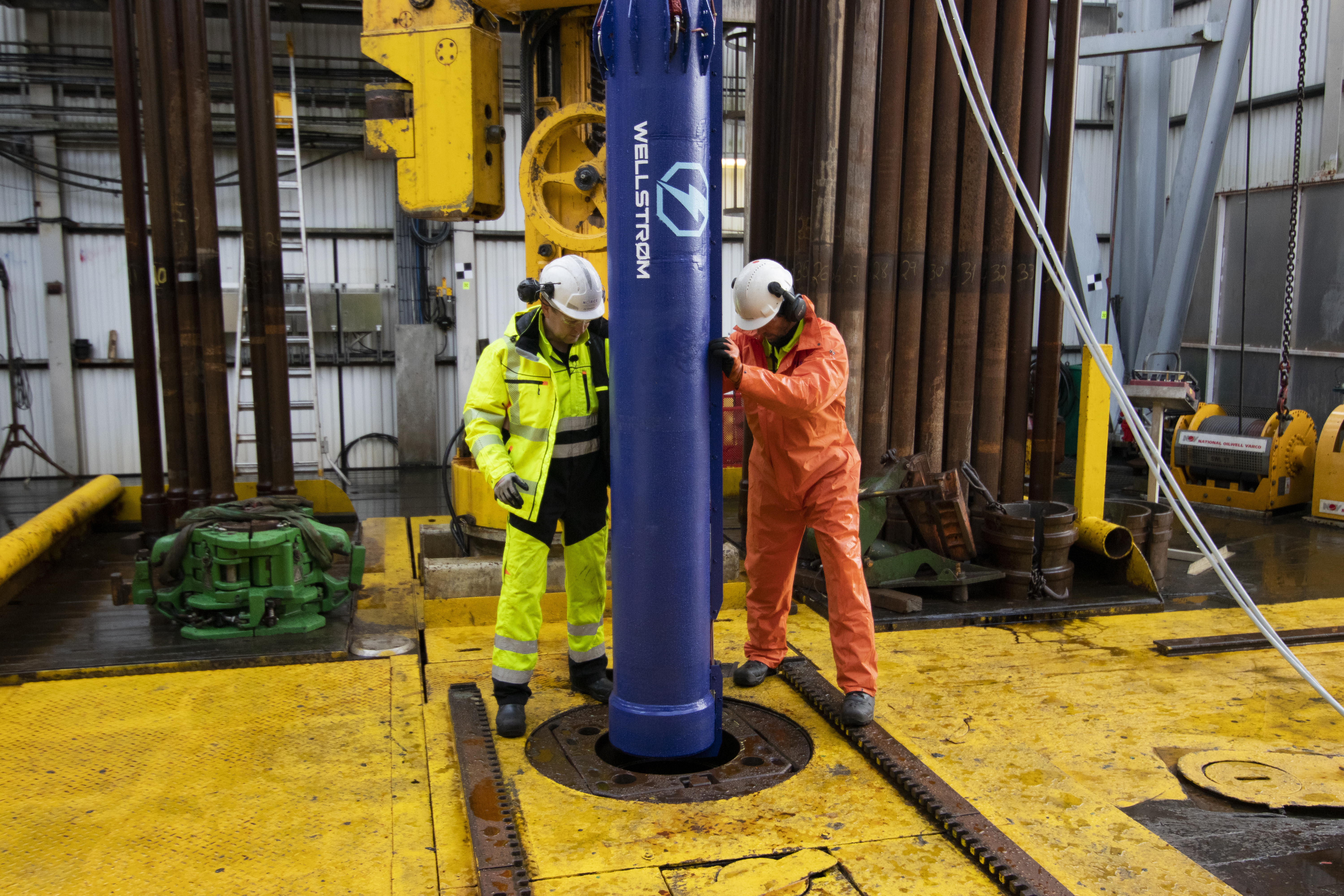When you no longer need a well to support oil and gas development, the well must be permanently sealed and taken out of service. This is done by plugging the well with cement 50 meters below the ocean bed. However, this is a risky and expensive operation. First, the cement can shrink, and potential leakages can happen, littering the ocean and posing a risk to the environment. Second, the cost is high, especially in deep waters. Additionally, CO2 emissions from cement production are significant.
Therefore, NORCE Norwegian Research Centre, Wellstrøm and TotalEnergies recently tested a new method for plugging wells at Ullrigg Test Centre in Stavanger. The new method, called Wellstrøm Bismuth3, uses melted metal instead of cement to plug the well permanently. The metal is called Bismuth and becomes liquid as water at 138 degrees. This enables it to float into every single crack in the cement, even those as thin as strands of hair, sealing the cracks and prevent leakages from happening.
- Thanks to Ullrigg Test Centre and the crew at NORCE, TotalEnergies and Wellstrøm, the test successful. The Wellstrøm M3 Bismuth plug was tested with three times higher pressure than the required criteria of TotalEnergies, and the tests show that the method fulfills all the requirements. This promises well ahead of our offshore testing later this year, says Gert Rege, CEO of Wellstrøm, the company that developed the method.
With the current method, where cement is used, you have to set a plug 50 meters below the ocean bed, and the method requires a full-scale drilling rig to transmit the drill string. With the new method, where you only set a plug 1-2 meters below the ocean bed, the whole operation can be done from a cable-laying vessel instead of a full-scale rigg.
- This new type of metal is both safer and more efficient when it comes to leakage, between 50 and 80 percent cheaper and much more climate- and environmentally friendly, Gert Rege states.
Ullrigg Test Centre is driven by NORCE Norwegian Research Centre and is one of the world’s most advanced, complete full-scale test and piloting rigs, with access to 8 wells drilled into the ground at Ullandhaug in Stavanger. This means you can test new technology onshore instead of offshore where testing is significantly more expensive and troublesome.
- Our goal at Ullrigg is to contribute to the development and implementation of new technologies that can reduce costs of well operations on the Norwegian shelf and at the same time make it as environmentally and climate friendly as possible. Therefore, I am really pleased that this test went well, says Senior Project Manager at Ullrigg Test Centre Per Simensen who was responsible for the Bismuth-testing.
The test was a pilot, but the plan – once qualified as per regulatory and internally requirement – is that TotalEnergies, one of the world’s largest energy companies, will start implementing the method globally
- The Bismuth method is among the highest priority areas within plug & abandonment technology in TotalEnergies. The potential is huge, and the next step is to test the method offshore in the North Sea during 2023, says Johan Kverneland, Head of research & development within Plug & Abandonment in TotalEnergies.
New method can minimize leakages and reduce Co2-emissions when plugging wells

To the left: Per Simensen, senior project leader, NORCE, and responsible for the Bismuth-testing NORCE To the right: Jørgen Smedsvig, engineer, NORCE. Photo: Andreas R. Graven.
NORCE, Wellstrøm and TotalEnergies recently tested a new method for plugging wells at Ullrigg Test Centre in Stavanger. The new method uses melted metal instead of cement to plug the well permanently. This new method minimizes leakage, between 50 and 80 percent cheaper and much more climate- and environmentally friendly.

Source:
Andreas R. Graven
To the left: Per Simensen, senior project leader, NORCE, and responsible for the Bismuth-testing NORCE To the right: Jørgen Smedsvig, engineer, NORCE.
Ullrigg Test Centre
Ullrigg Test Centre is driven by NORCE Norwegian Research Centre and is one of the world’s most advanced, complete full-scale test and piloting rigs, with access to 8 wells drilled into the ground at Ullandhaug in Stavanger.
Learn more about Ullrigg at their webpage